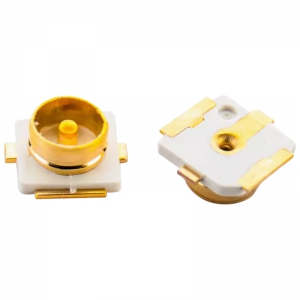
Antenna Mount is a device used to fix and support antennas, allowing them to be adjusted and positioned in specific directions to optimize wireless communication performance. The design of the antenna base must take into account the weight, size, wind load, installation environment (such as roof, wall, tower, etc.) of the antenna, as well as the required adjustment flexibility.
characteristic:
Stability: The antenna base must provide sufficient mechanical strength and stability to ensure that the antenna can maintain its position even in adverse weather conditions.
Adjustability: Many antenna mounts are designed with rotation and tilt mechanisms, allowing users to adjust the azimuth and elevation angles of the antenna as needed.
Durability: Antenna bases are typically made of corrosion-resistant materials, such as stainless steel or aluminum alloy, to resist erosion from outdoor environments.
Compatibility: The antenna base needs to be compatible with different types and sizes of antennas, and sometimes also needs to be used in conjunction with other installation accessories (such as brackets, crossbeams, etc.).
Structural composition:
The basic structure of an antenna base includes:
Base: usually fixed on the ground, wall or other supporting structures, providing a stable foundation for the entire antenna base.
Column: Extending from the base, it is used to fix the vertical part of the antenna.
Rotating platform: located at the top of the column, allowing the antenna to rotate on a horizontal plane and adjust the azimuth angle.
Tilt mechanism: used to adjust the elevation angle of the antenna, which can be manually or electrically controlled.
Fastener: used to secure the antenna to the antenna base, ensuring a secure connection.
Common types:
The common types of antenna bases include:
Roof mounting base: designed to install antennas on the roof of a building, usually with anti slip pads and waterproof seals.
Wall mounting base: used to fix the antenna on a wall or other vertical surface.
Mast or tower mounting bracket: used on towering masts or communication towers, special fasteners and reinforcement measures may be required.
Vehicle mounting seat: designed specifically for mobile applications, such as satellite communication antennas installed on top of the vehicle.
Application:
Antenna bases are widely used in various wireless communication scenarios, including:
Mobile communication base station
satellite communication
Broadcasting and television transmission and reception
Aviation and Maritime Communications
military communication
Wireless Internet Service Provider (WISP)
Wireless network expansion for individuals or businesses
Selection and Use:
When selecting a suitable antenna base, the following factors need to be considered:
Antenna type and size: Ensure that the antenna base can bear the weight and size of the selected antenna.
Installation environment: Select the appropriate antenna base type based on the conditions of the installation location, such as roof, wall, or tower.
Adjustment requirements: If it is necessary to frequently adjust the antenna direction, an antenna base with a precise adjustment mechanism should be selected.
Weather resistance and durability: Choose materials that are corrosion-resistant and weather resistant based on geographical location and climatic conditions.
Proper installation and use of antenna bases are crucial for ensuring the performance and reliability of wireless communication systems. During installation, the manufacturer's guidance and local building regulations should be followed to ensure safety and compliance.
Shenzhen Baoxin Chuang Electronics Co., Ltd.
Address: 45th Floor, SEG Plaza, 1002 Huaqiang North Road, Futian District, Shenzhen, Guangdong, China
Website: www.boxintron-ic.com
Tel: +86-0755-8355 3623/8322 8690/8322 8629/8322 8357
Fax: +86-0755-8366 0820
Email: service@boxintron.com
Electronic components with a single expert
Shenzhen Baoxin Chuang Electronics Co., Ltd. is committed to becoming the best IC supplier with single expert and IC agent
Strive to provide customers with one-stop electronic components procurement and IC supporting services
Tel: +86-0755-8355 3623 Fax Fox: +86-0755-8366 0820 Email: service@boxintron.com
Address: Room 4503, 45th Floor, SEG Plaza, 1002 Huaqiang North Road, Futian District, Shenzhen, Guangdong, China
![Shenzhen Baoxin Chuang Electronics Co., Ltd. [one-stop type of electronic components with one-only original authentic] Shenzhen Baoxin Chuang Electronics Co., Ltd. [one-stop type of electronic components with one-only original authentic]](templates/web/images/logo.png)